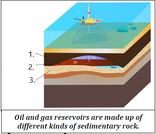
Fossil Fuel Formation & Use
- Subject:
- Environmental Science
- Material Type:
- Homework/Assignment
- Lesson
- Author:
- Sara Catanese
- Date Added:
- 03/11/2021

Fossil Fuel Formation & Use
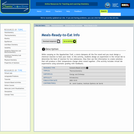
You and a friend are hiking the Appalachian Trail when a storm comes through. You stop to eat, but find that all available firewood is too wet to start a fire. From your Chem 106 class, you remember that heat is given off by some chemical reactions; if you could mix two solutions together to produce an exothermic reaction, you might be able to cook the food you brought along for the hike. Luckily, being the dedicated chemist that you are, you never go anywhere without taking along a couple chemical solutions called X and Y just for times like this. The Virtual Lab contains solutions of compounds X and Y of various concentrations.
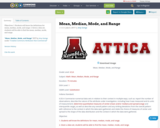
Objectives:
1. Students will know the definitions for mean, median, mode, and range.
2. Given a data set, students will be able to find the mean, median, mode, and range.
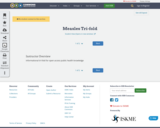
informational tri-fold for open access public health knowledge
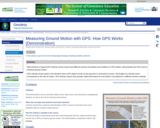
With printouts of typical GPS velocity vectors found near different tectonic boundaries and models of a GPS station, demonstrate how GPS work to measure ground motion.GPS velocity vectors point in the direction that a GPS station moves as the ground it is anchored to moves. The length of a velocity vector corresponds to the rate of motion. GPS velocity vectors thus provide useful information for how Earth's crust deforms in different tectonic settings.
(Note: this resource was added to OER Commons as part of a batch upload of over 2,200 records. If you notice an issue with the quality of the metadata, please let us know by using the 'report' button and we will flag it for consideration.)

This lesson will provide instruction on explaining how to safely and accurately measure a resident using a standing scale. The presentation provides step-by-step procedures on how to go from reading the value on the height bar to converting to feet and inches, to the nearest 1/4 inch. The lesson then goes through two examples to complete as a class, followed by six practice problems to check for student understanding. After completing this lesson students should be prepared to proceed to learning the required skill needed in preparation for their state skills test.

This is a combination field/lab exercise for an upper-level Sedimentology course. Students will use Brunton compasses to collect structural and sedimentological data. Orientation data will be analyzed using Rose diagrams.
(Note: this resource was added to OER Commons as part of a batch upload of over 2,200 records. If you notice an issue with the quality of the metadata, please let us know by using the 'report' button and we will flag it for consideration.)
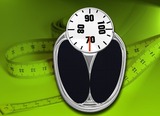
This lesson explains how to accurately read a physical beam scale that are used in healthcare settings. This presentation introduces some beginning concepts on considerations when completing this skill on a resident. Then the lesson continues into explaining how to accurately read the scale to the nearest 1/10 of a pound. Then provides three example problems, followed by eight practice problems for students to complete or as a class activity.
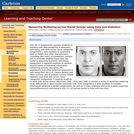
This set of assignments exposes students to statistics and data pertaining to economic wellbeing over time across racial (black-white) categories in the U.S.

I share the instructions and evaluation rubric I give to students for a short Media Analysis paper in my Introduction to Sociology course in Canada.

This kit covers a historical overview of American representations of endangered species from the slaughter of the American buffalo to Palm plantations in Sumatra. It compares conflicting constructions about human/animal relations, rainforest biodiversity, the Northern Rockies gray wolf, frogs and Atrazine. Students decode how the relationship of animals and humans has been portrayed and passed on from generation to generation.
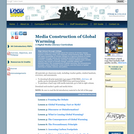
Lessons teach core knowledge about the science of climate change, explore conflicting views, and integrate critical thinking skills. Students will apply knowledge of climate change to a rigorous analysis of media messages through asking and answering questions about accuracy, currency, credibility, sourcing, and bias. Lessons address basic climate science, the causes of climate change, scientific debate and disinformation, the consequences of global warming, the precautionary principle, carbon footprints, moral choices, and the history of global warming in media, science, and politics.
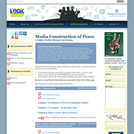
This kit provides teachers, college faculty and other educators with the materials needed to engage students in a dynamic and constructivist process of learning how antiwar movements have been perceived by the people in the United States and how the U.S. media has constructed that public perception. The subject areas covered include U.S. history, African-American studies, labor studies, Latino studies, media studies, Native American studies, peace studies, sociology and women_ÎŁ_ studies among many others.
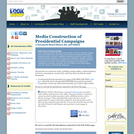
This curriculum kit helps to teach about the role of media in 28 U.S. elections ranging from 1800-2008. Over 160 media documents are included for decoding, including slides of posters, handbills and political cartoons; audio clips of songs and radio programs; and video clips of speeches, debates, comedy TV and political commercials. Students will learn how to analyze historical documents, the history of presidential campaigns, the crafting and marketing of campaign messages, and the impact of new technologies and new media on presidential campaigns.
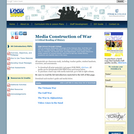
This kit analyzes Newsweek coverage of the Vietnam War, Gulf War and the War in Afghanistan. Students will learn core information about the wars in Vietnam, the Persian Gulf, and Afghanistan, how media influences public opinion of current events, and how to ask key media literacy questions and identify bias in the news.
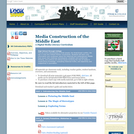
This kit covers stereotyping of Arab people, the Arab/Israeli conflict, the war in Iraq and militant Muslim movements. Students will learn core information and vocabulary about the historical and contemporary Middle East issues that challenge stereotypical, simplistic and uninformed thinking, and political and ethical issues involving the role of media in constructing knowledge, evaluating historical truths, and objectivity and subjectivity in journalism.
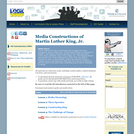
This kit explores the ways in which King and his legacy have been portrayed in various media forms. The first lesson follows a chronology of King's life through interactive decoding of rich media documents (comic books, billboards, songs, music videos, etc.). The following lessons use excerpts of Dr. King's speeches from 1963, 1967 and 1968 to examine his views on social change; explore the portrayal of King in magazine covers, advertisements, Web sites, film clips and monuments; and use letters to the editor about celebrating King to explore challenges to change.
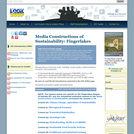
This kit explores how sustainability within the Finger Lakes region of New York has been presented in the media with a particular focus on issues related to food, water and agriculture. Each of the seven lessons integrates media literacy and critical thinking with key knowledge and concepts related to sustainability. This kit is a companion to the nineteen-lesson collection, Media Constructions of Sustainability: Food, Water and Agriculture.

This kit explores how sustainability has been presented in the media with a particular focus on issues related to food, water and agriculture. Each of the 19 lessons integrates media literacy and critical thinking into lessons about different aspect of sustainability. Constant themes throughout the kit include social justice, climate change, energy, economics and unintended consequences.
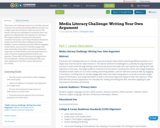
This lesson will challenge learners to critically read and evaluate news articles presenting different positions on a single issue that the learner takes interest in. The learner will then be challenged to formulate their own opinion by refining their own argument on the issue. The target audience of learners for this lesson constitute the Career and College Readiness Standards Grade Level E (9-12) in their reading and writing abilities. Learners will hone practical skills by engaging in this lesson, such as how to critically engage with news and media, being able to succinctly summarize larger pieces of information, and using information to write a structured argument based on their own opinions. These skills will have practical applications for everyday life, reading and writing the GED, and when applying for jobs that require information processing.